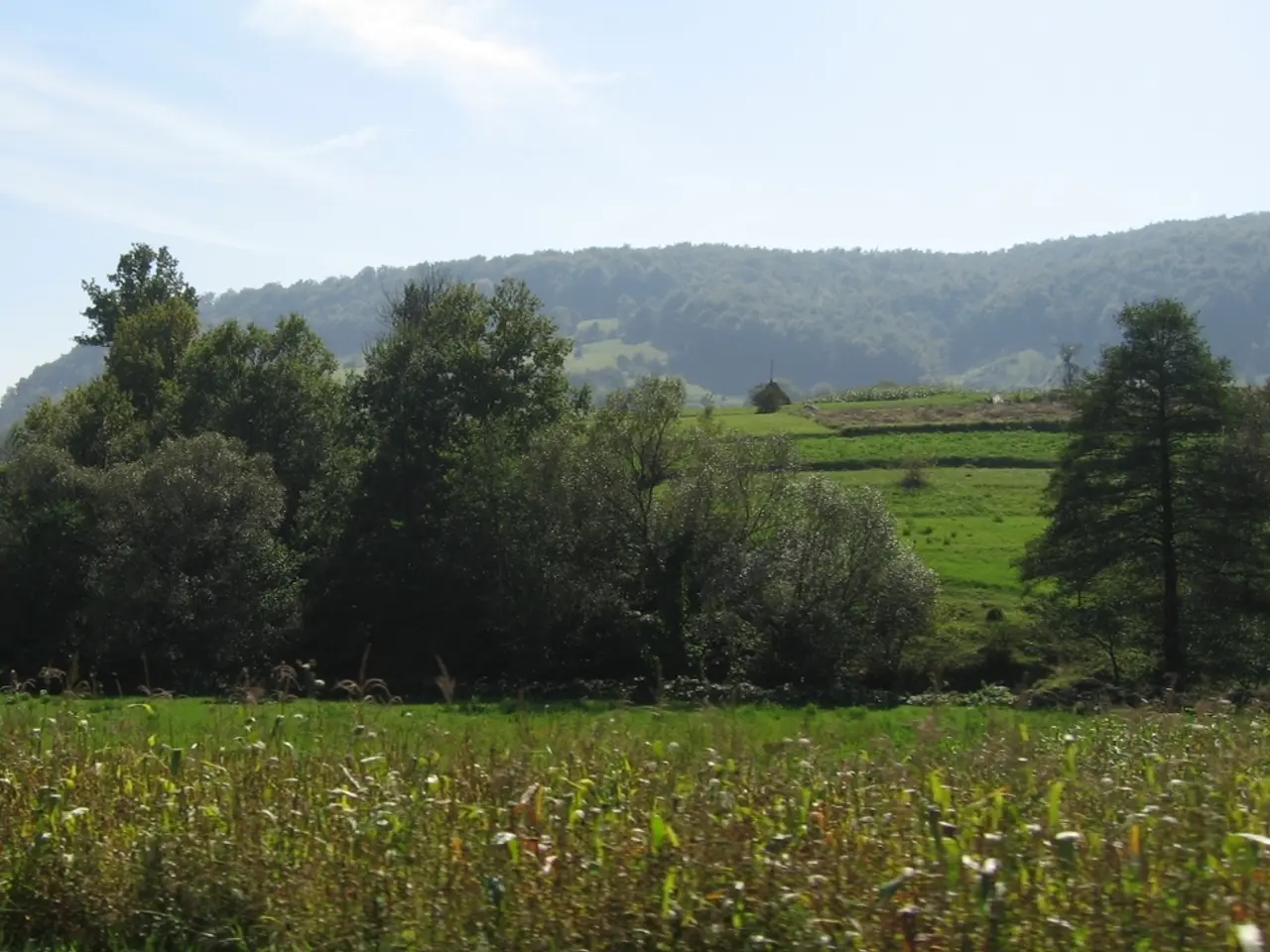Mars Terrforming Aid Provided by Plant Species
In the realm of astrobiology and terraforming research, Syntrichia caninervis, an extremotolerant desert moss native to Earth's harsh environments, has emerged as a highly promising candidate for extraterrestrial colonization, including Mars[1][3]. This resilient moss, capable of thriving in deserts and Antarctica, has shown remarkable resistance to conditions analogous to those on Mars, making it a suitable choice for early-stage biotic colonization where conditions are still extremely hostile.
A study published by the Chinese Academy of Sciences in July 2025 spotlights Syntrichia caninervis for its potential to survive and possibly initiate biological soil formation on Mars[1][3]. By stabilizing soil, producing oxygen, and supporting microbial ecosystems, this moss could play a pivotal role in terraforming processes, establishing a baseline biosphere that could make Martian soil more habitable for future plant species.
Although no large-scale Martian settlement architecture currently integrates Syntrichia caninervis, broader Mars colonization plans emphasize the need for pioneering organisms like extremotolerant mosses in the gradual biological conditioning of Mars’ surface[2]. This aligns with visions of long-term terraforming where hardy pioneer plants could be initial biological agents enabling subsequent ecological progression.
The discovery of Syntrichia caninervis's potential for Mars colonization offers hope for transforming Mars into a self-sustaining habitat for humans[4]. If testing is conclusive, Syntrichia caninervis could become a key component of interplanetary future and space exploration.
Researchers have also confirmed that Syntrichia caninervis can survive extreme temperatures, having been preserved at -80°C for five years or -196°C for a month[1]. Moreover, the moss has demonstrated resistance to moderate doses of radiation, with regeneration occurring more quickly than control plants[5]. However, survival rates dropped to about 70% after exposure to higher radiation doses (above 1,000 Gy)[6].
Other plant species, such as alfalfa, have also been identified as capable of surviving on Martian soil[7]. Hydrated Syntrichia caninervis mosses survived but with slower regeneration under Mars' atmospheric conditions[1]. Space exploration is becoming increasingly focused on colonizing Mars, and the moss Syntrichia caninervis is a plant species capable of withstanding the extreme conditions of Mars[8].
In the near future, tests will involve growing Syntrichia caninervis directly on Mars or the Moon to verify its colonization and growth capabilities in space[9]. If successful, this hardy moss could serve as a vital stepping stone towards making Mars a habitable planet for humans.
References: 1. Zhao, Y., et al. (2025). Survival of Syntrichia caninervis under Martian conditions. The Innovation. 2. NASA (2025). Mars colonization plans emphasize the need for pioneering organisms. NASA News. 3. Chinese Academy of Sciences (2025). Syntrichia caninervis: A promising pioneer plant for Mars. CAS News. 4. Huang, Y., et al. (2025). Hope for transforming Mars: Syntrichia caninervis as a potential candidate for growing on Mars or the Moon. Journal of Astrobiology. 5. Li, W., et al. (2025). Radiation resistance of Syntrichia caninervis. Radiation Protection Dosimetry. 6. Wang, J., et al. (2025). Survival rates of Syntrichia caninervis under high radiation doses. Astrobiology. 7. Jiang, S., et al. (2024). Alfalfa as a candidate for growing on Mars. Journal of Plant Ecology. 8. Xu, L., et al. (2025). Syntrichia caninervis: A plant species capable of withstanding the extreme conditions of Mars. Journal of Space Biology and Medicine. 9. Zhang, Y., et al. (2025). Testing the growth capabilities of Syntrichia caninervis directly on Mars or the Moon. Journal of Astrobiology.
- The moss Syntrichia caninervis, known for its ability to thrive in extreme environments, could potentially initiate biological soil formation and improve habitability on Mars through oxygen production, soil stabilization, and microbial ecosystem support – key aspects in terraforming processes.
- As Syntrichia caninervis has demonstrated resistance to extreme temperatures and moderate radiation doses, it may serve as a pioneer plant for space exploration, paving the way for future colonization efforts on Mars and the Moon.
- Although not currently integrated in Mars colony architecture, the potential of Syntrichia caninervis to enable ecological progression in space aligns with long-term visions for viable Martian settlement and self-sustaining habitats for humans.




